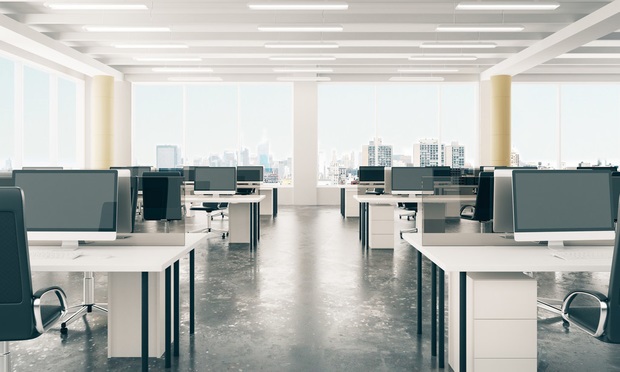As non-essential construction has started again in New York, some design and construction firms are creating new ways to design and build space.
Office design is ripe for new ideas. While some firms are taking a “wait-and-see” approach to renovating space, others are reimaging what workspace will look like in the future. “The health concerns coming out of the pandemic will shape design and construction moving forward,” according to Avison Young’s New York City Third Quarter Design & Construction report.
For existing office space, the changes have been minimal outside of touchless fixtures and hand-sanitizer stations. “Companies are often not willing to invest the capital because we may return to traditional practices sometime next year,” according to Avison Young. “However, these short-term measures have not reassured much of the workforce to return to [the] office, as many businesses are still permitting full or part-time work from home options through at least the end of the year.”
In the future, companies will need to balance employee safety with collaboration and productivity, Avison Young says. Companies may choose to keep some parts of popular open-office layouts with hybrid designs that remain open for proper air circulation but are divided to prevent the spread of germs across long distances. These compromises could include larger privacy panels, fixed open wall systems and breakout rooms with opposite-facing work surfaces.
Going Too Far?
But there is concern in some quarters that proposed changes to office design in the wake of the pandemic could go too far. Earlier this year, Dr. Aaron Bernstein, USGBC board chair and also the co-director of Harvard’s Center for Climate, Health and the Global Environment (Harvard C-CHANGE), told GlobeSt he was concerned the design community might overreact to the pandemic. “There are a lot of things that people are saying about current design thoughts, including about the open office, and whether urbanization and public transportation are good ideas,” he said.
While Bernstein says these questions are coming from reasonable places, he cautions that people should not automatically discard these formerly popular design features because of the coronavirus.
For her part, Rachel Gutter, president of the International WELL Building Institute, is concerned that some of the temporary changes that are being proposed, such as people being stationed six feet apart in offices, could become permanent once there is a vaccine for the novel virus.
“I think that the ramifications of us going six feet apart and one-tenth of occupancy at offices have hugely negative implications for things like climate change, resourcing for organizations and urban density,” Gutter says. “I’m not ready to say that those are good solutions, nor am I ready to say that they are even hopeful solutions.”
